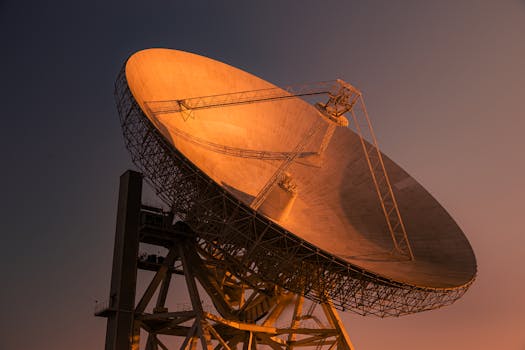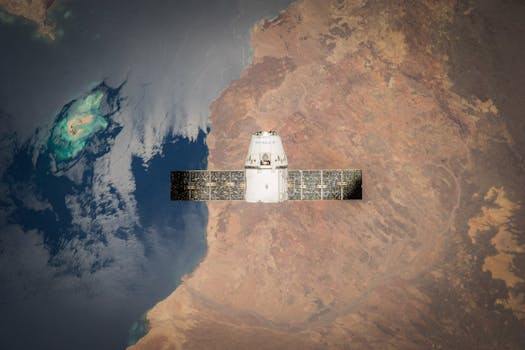Navigating Change: The Latest Trends in Satellite Telecommunications and Their Impact

Navigating Change: The Latest Trends in Satellite Telecommunications and Their Impact
Introduction to Navigating Change: The Latest Trends in Satellite Telecommunications and Their Impact

Navigating Change: The Latest Trends in Satellite Telecommunications and Their Impact is a crucial aspect of the modern telecommunications landscape. The satellite telecommunications industry is undergoing significant changes, driven by advances in technology and shifting market demands. As the industry continues to evolve, it is essential to understand the latest trends and their impact on the industry and beyond.
The satellite telecommunications industry has experienced rapid growth in recent years, driven by the increasing demand for global connectivity and the need for reliable and secure communication services. The industry has witnessed significant advancements in technology, including the development of high-throughput satellites, advanced antenna systems, and sophisticated signal processing techniques. These advancements have enabled the provision of high-speed broadband services, including internet, voice, and data communications, to remote and underserved communities around the world.
However, the industry is not without its challenges. The increasing demand for satellite capacity, combined with the limited availability of spectrum, has led to concerns about congestion and interference. Additionally, the industry is subject to regulatory frameworks that can vary significantly from country to country, creating complexity and uncertainty for operators and service providers.
The Latest Trends in Satellite Telecommunications

Despite these challenges, the satellite telecommunications industry continues to innovate and evolve. Some of the latest trends in the industry include the development of small satellites, the increasing use of satellite constellations, and the growth of the satellite-based internet of things (IoT) market.
Small satellites, also known as smallsats, are satellites that weigh less than 500 kilograms. These satellites are designed to be smaller, lighter, and more cost-effective than traditional satellites, making them an attractive option for a wide range of applications, including earth observation, communication, and scientific research. The use of small satellites is expected to increase in the coming years, driven by the growing demand for low-cost and flexible satellite solutions.
Satellite constellations are another significant trend in the satellite telecommunications industry. A satellite constellation is a group of satellites that work together to provide global or regional coverage. These constellations can be used to provide a range of services, including broadband internet, voice, and data communications. The use of satellite constellations is expected to increase in the coming years, driven by the growing demand for global connectivity and the need for resilient and secure communication services.
The satellite-based IoT market is also experiencing significant growth, driven by the increasing demand for machine-to-machine (M2M) communication services. Satellite-based IoT solutions can be used to connect remote devices and sensors, enabling a wide range of applications, including asset tracking, smart agriculture, and industrial automation. The use of satellite-based IoT solutions is expected to increase in the coming years, driven by the growing demand for low-cost and reliable M2M communication services.
The Impact of the Latest Trends in Satellite Telecommunications

The latest trends in satellite telecommunications are having a significant impact on the industry and beyond. The development of small satellites, satellite constellations, and satellite-based IoT solutions is enabling the provision of low-cost and reliable communication services to remote and underserved communities around the world.
The use of satellite telecommunications is also having a significant impact on a wide range of industries, including aviation, maritime, and agriculture. Satellite-based communication services are being used to connect aircraft, ships, and other vehicles, enabling real-time communication and navigation. Satellite-based IoT solutions are also being used to connect devices and sensors, enabling a wide range of applications, including asset tracking, smart agriculture, and industrial automation.
However, the growth of the satellite telecommunications industry is not without its challenges. The increasing demand for satellite capacity, combined with the limited availability of spectrum, has led to concerns about congestion and interference. Additionally, the industry is subject to regulatory frameworks that can vary significantly from country to country, creating complexity and uncertainty for operators and service providers.
Conclusion

In conclusion, Navigating Change: The Latest Trends in Satellite Telecommunications and Their Impact is a crucial aspect of the modern telecommunications landscape. The satellite telecommunications industry is undergoing significant changes, driven by advances in technology and shifting market demands. The development of small satellites, satellite constellations, and satellite-based IoT solutions is enabling the provision of low-cost and reliable communication services to remote and underserved communities around the world. However, the industry is not without its challenges, and it is essential to understand the latest trends and their impact on the industry and beyond.
See more:



